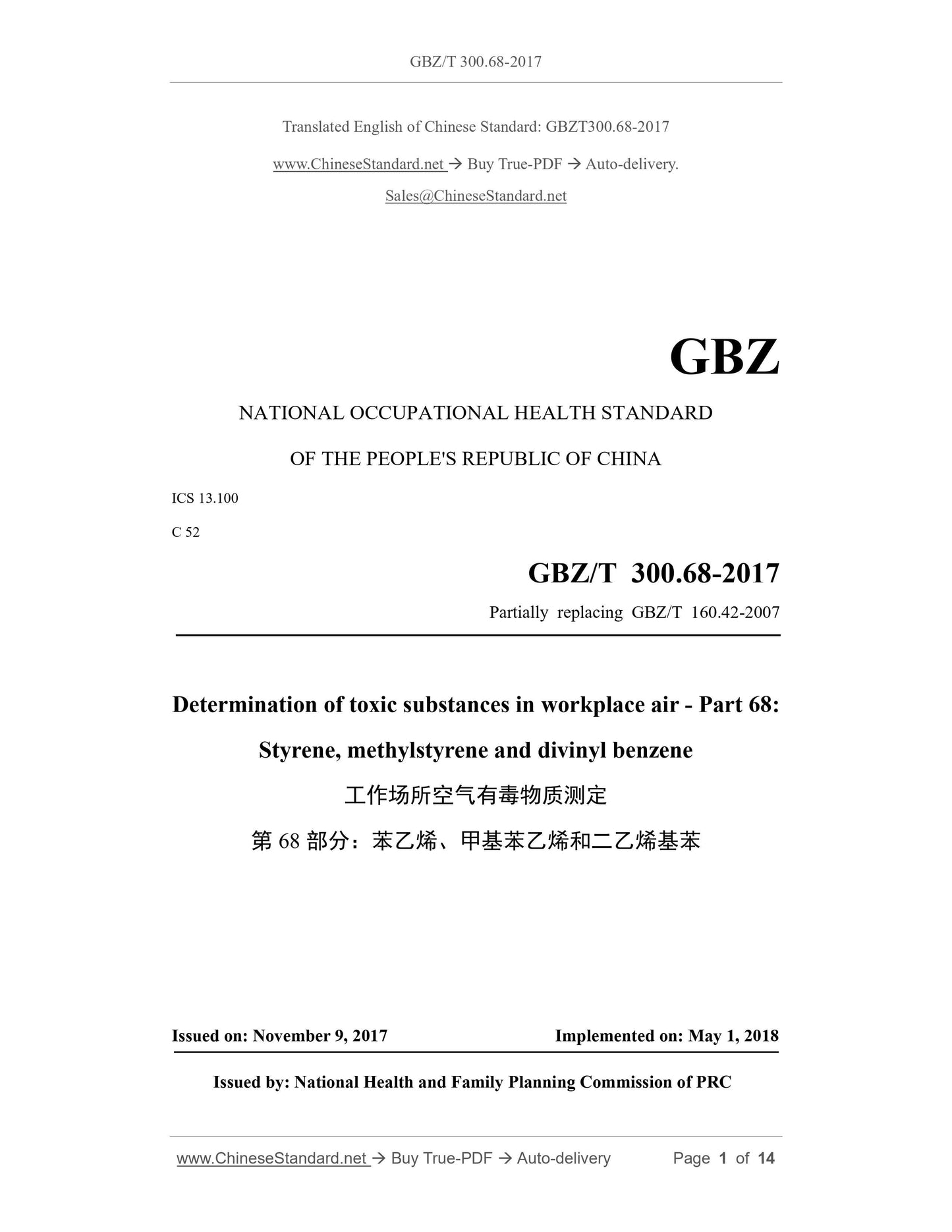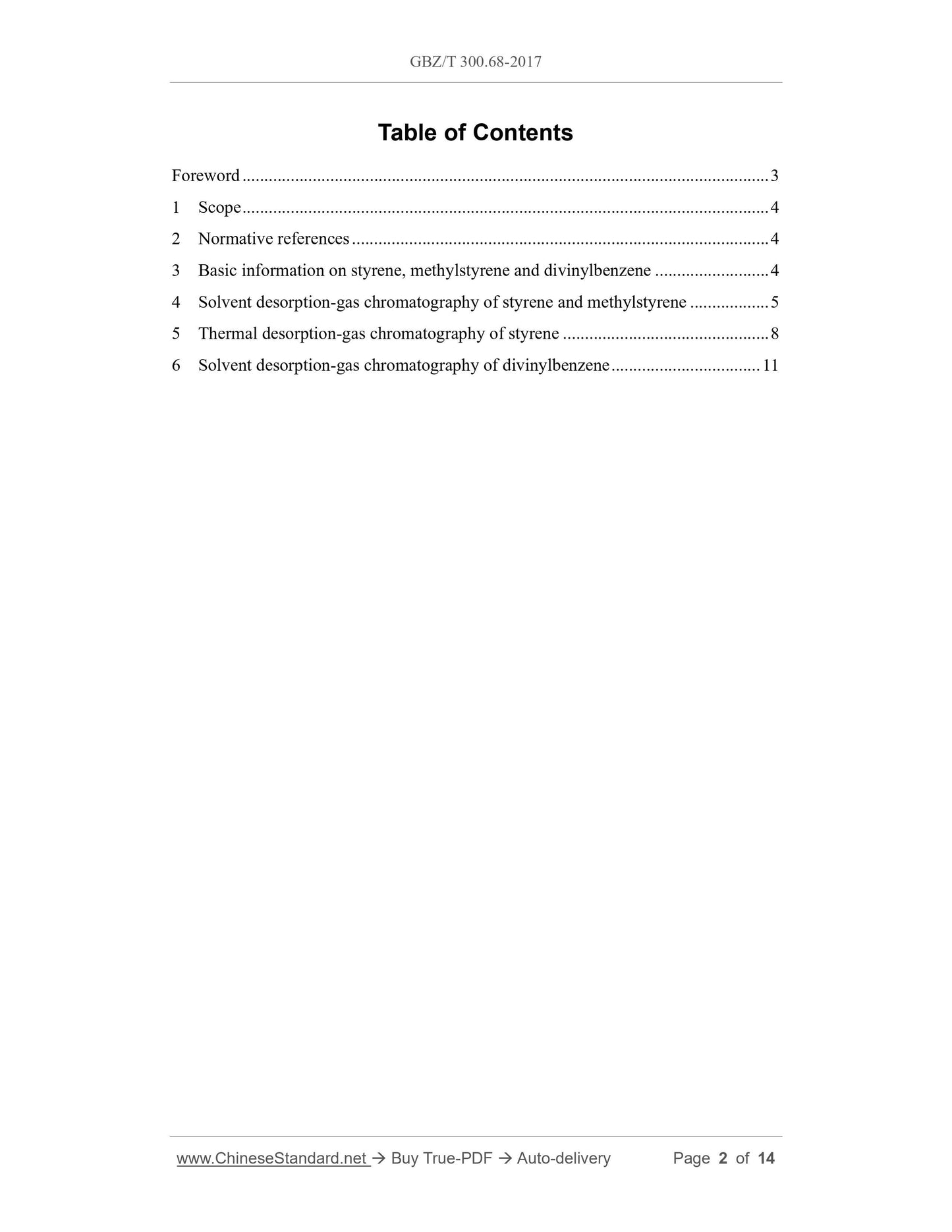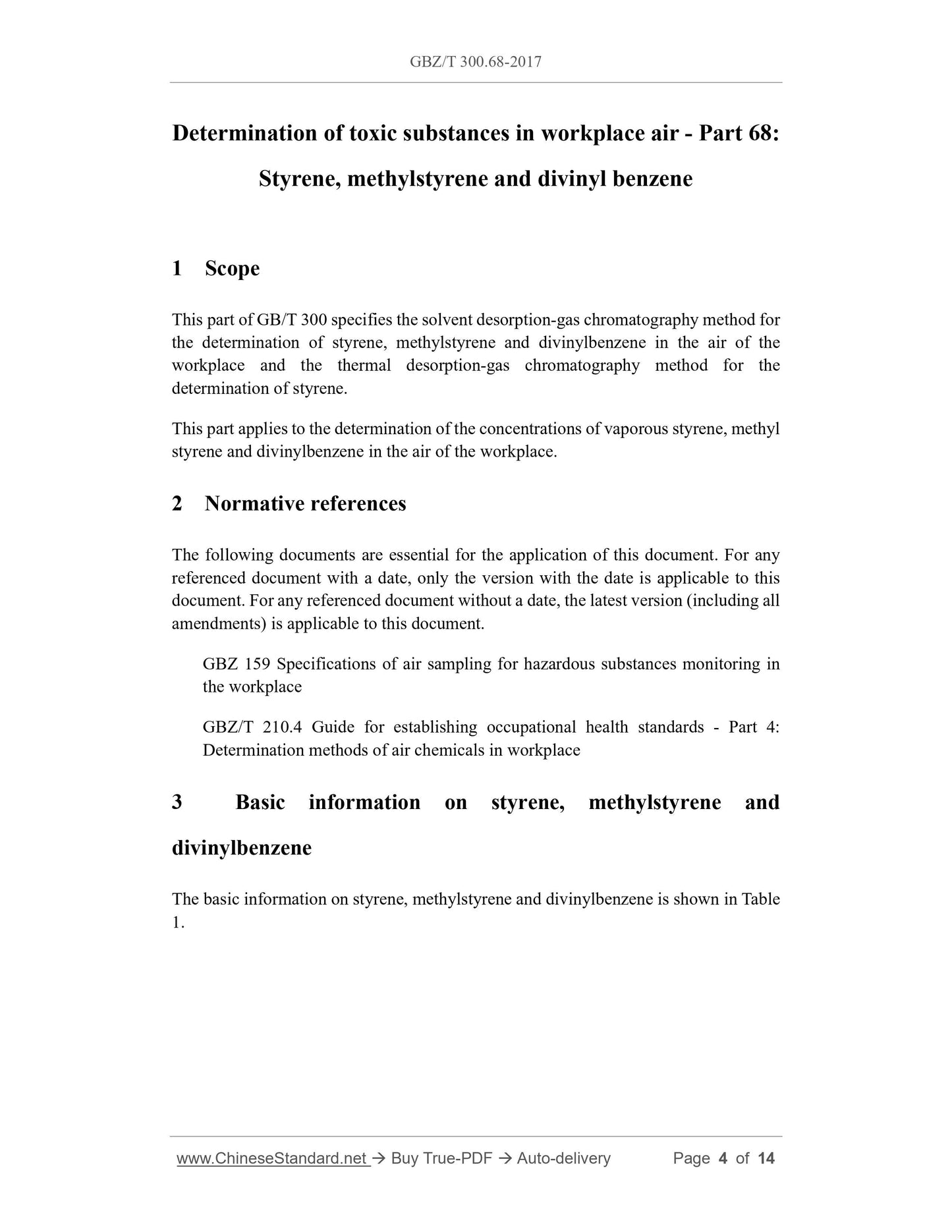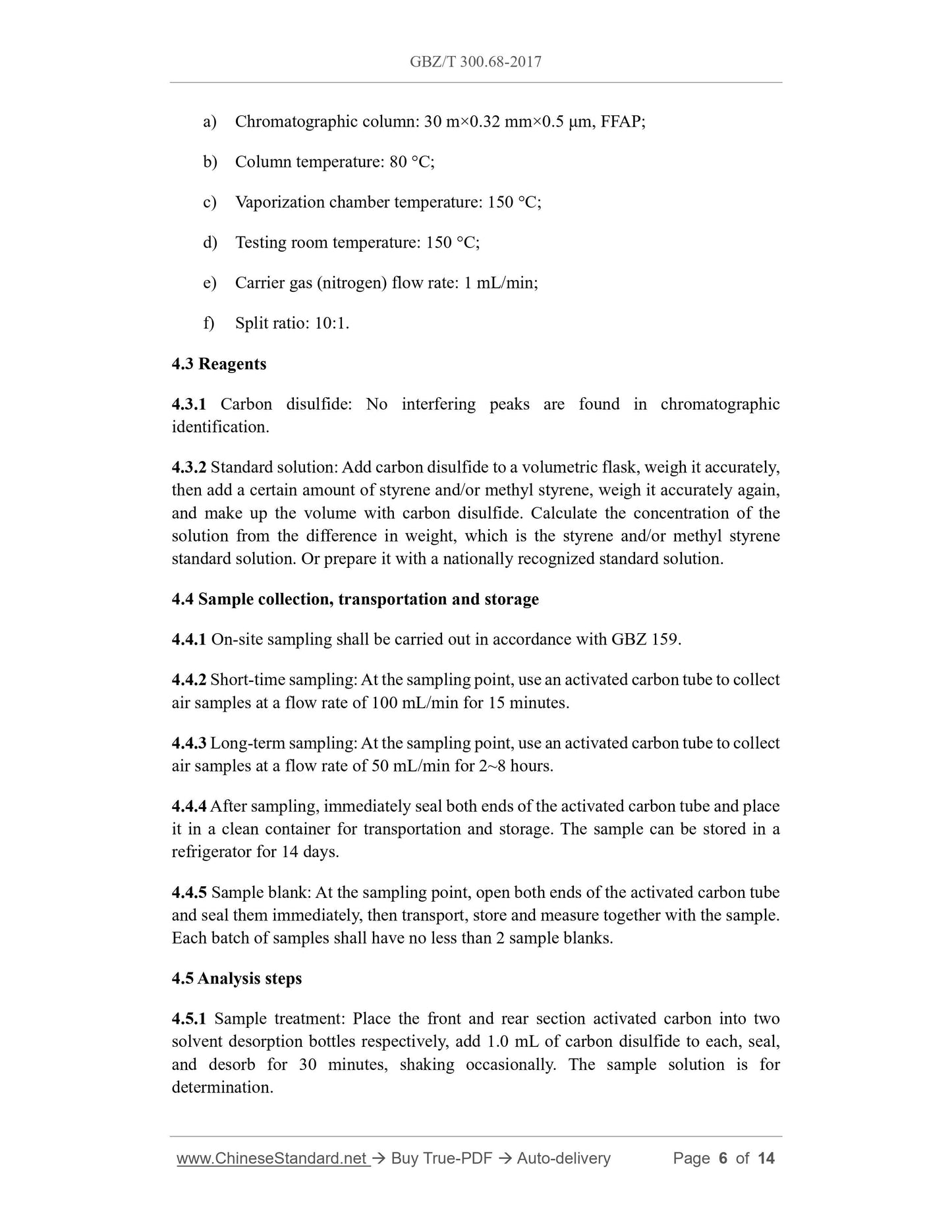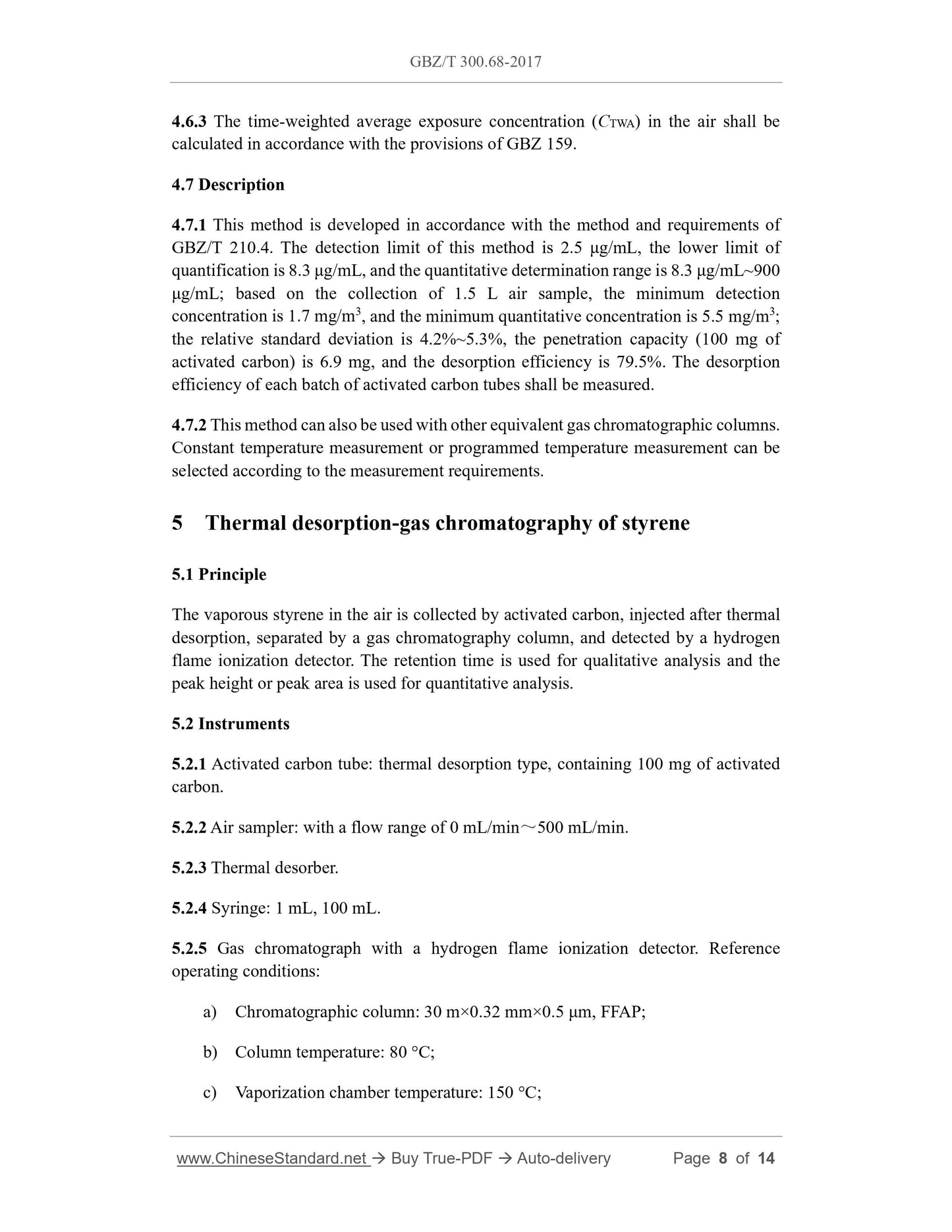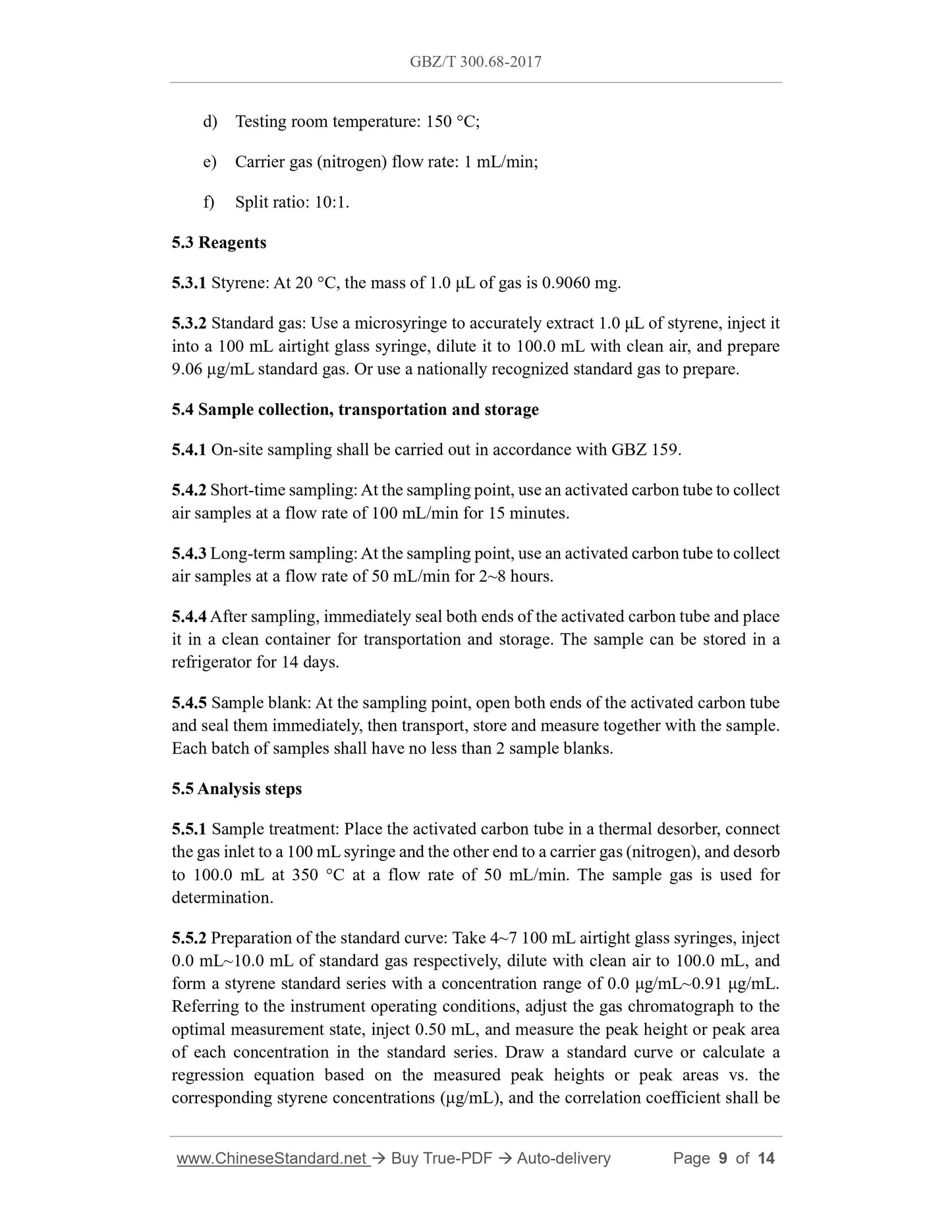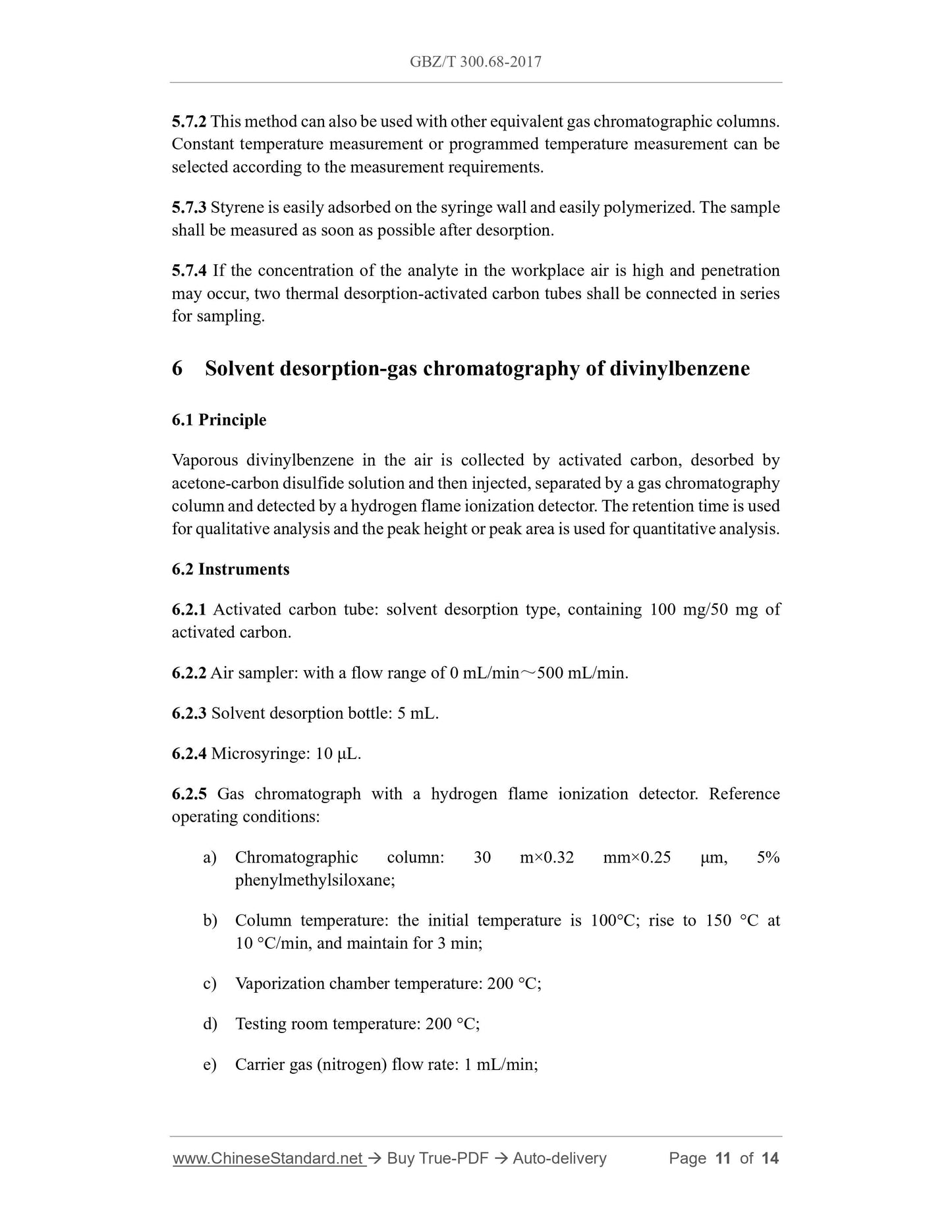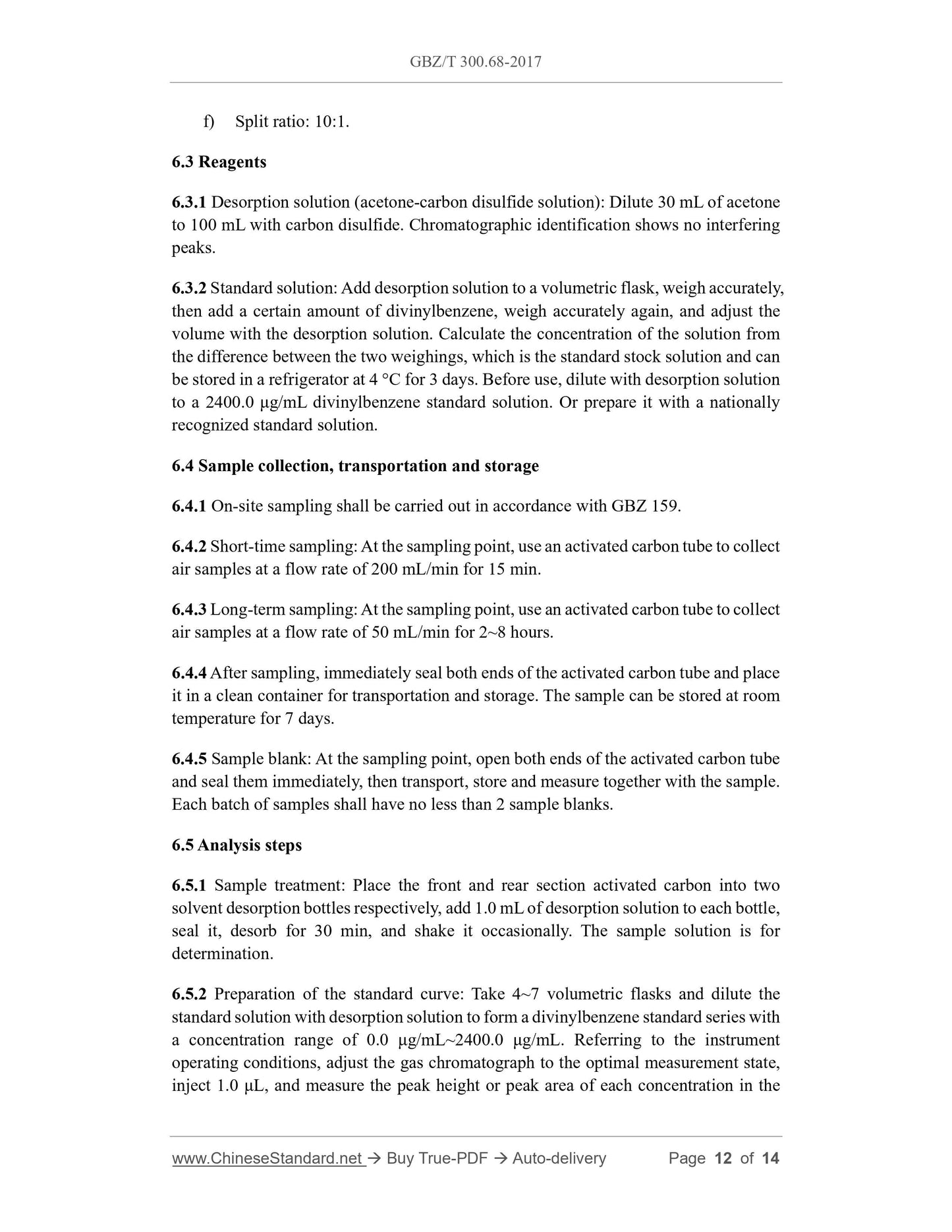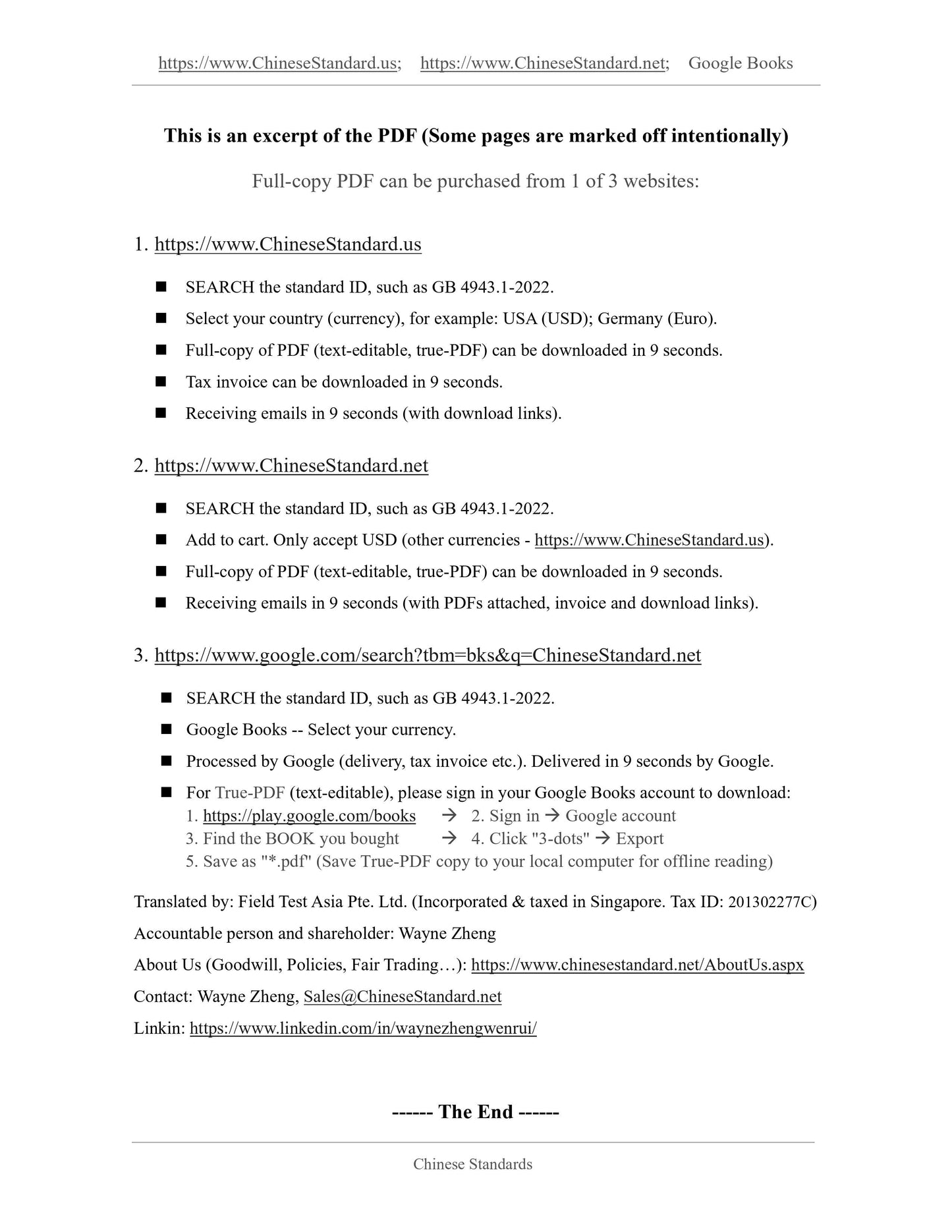1
/
of
9
www.ChineseStandard.us -- Field Test Asia Pte. Ltd.
GBZ/T 300.68-2017 English PDF (GBZ/T300.68-2017)
GBZ/T 300.68-2017 English PDF (GBZ/T300.68-2017)
Regular price
$110.00
Regular price
Sale price
$110.00
Unit price
/
per
Shipping calculated at checkout.
Couldn't load pickup availability
GBZ/T 300.68-2017: Determination of toxic substances in workplace air - Part 68: Styrene, methylstyrene and divinyl benzene
Delivery: 9 seconds. Download (and Email) true-PDF + Invoice.Get Quotation: Click GBZ/T 300.68-2017 (Self-service in 1-minute)
Newer / historical versions: GBZ/T 300.68-2017
Preview True-PDF
Scope
This part of GB/T 300 specifies the solvent desorption-gas chromatography method forthe determination of styrene, methylstyrene and divinylbenzene in the air of the
workplace and the thermal desorption-gas chromatography method for the
determination of styrene.
This part applies to the determination of the concentrations of vaporous styrene, methyl
styrene and divinylbenzene in the air of the workplace.
Basic Data
| Standard ID | GBZ/T 300.68-2017 (GBZ/T300.68-2017) |
| Description (Translated English) | Determination of toxic substances in workplace air - Part 68: Styrene, methylstyrene and divinyl benzene |
| Sector / Industry | National Standard (Recommended) |
| Classification of Chinese Standard | C52 |
| Word Count Estimation | 8,819 |
| Date of Issue | 2017-11-09 |
| Date of Implementation | 2018-05-01 |
| Older Standard (superseded by this standard) | GBZ/T 160.42-2007 |
| Regulation (derived from) | State-Health-Communication (2017) 24 |
| Issuing agency(ies) | National Health and Family Planning Commission |
Share
